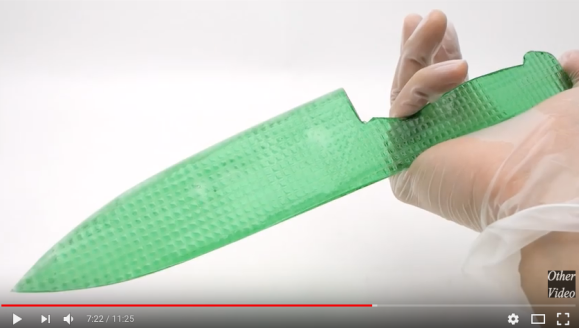
White rice goes head to head with jelly in the sharpest blade stakes, but only one can win.
Ever since Japanese YouTuber Attoteki Fushinsha no Kiwami surprised us all with a knife made from dried bonito, the clever craftsman has been honing his skills along with his blades, experimenting with more unconventional materials like pasta, plastic wrap, and even aluminium foil.
Now the YouTuber is back with two new surprising blades, and he’s adding them to a scale of sharpness to show just how great the finished result can be. So let’s get right to it and take a look at how these incredible blades are made, starting first with his knife made from jelly.
The first step in the process here is to melt the small pieces of jelly in a pan on the stove.
After adding a bit of food colouring and gelatin during the heating process, it’s then simmered for three hours, before being poured out onto a flat tray and cooled in the refrigerator overnight. Then it’s time to cut a piece out, using a traced-out image of an ordinary knife, from which point on it starts to resemble the end product.
The jelly hardens after being left to dry overnight, and then the whetstones are brought out to give the jelly a razor-sharp edge. The jelly blade then becomes so sharp that it cuts through paper and easily slices through cucumber.
Attoteki Fushinsha no Kiwami then gets the mad idea to melt his handiwork all over again, reversing the process by pouring the jelly into their original small packs, before setting them in the refrigerator and then serving them up on a plate, proving that the blade is entirely edible!
And the result? It turns out that the jelly knife is surprisingly sharp, ranking in at number three on the craftsman’s list of non-metallic creations.
Now let’s take a look at the making of the plain white rice blade.
In the video, we can see how the craftsman begins by grinding a small cup of uncooked polished rice until it becomes a fine white powder. After adding the powdered rice and a couple of aluminium oxide balls to a glass jar, he creates a homemade mill using a metal frame and two rollers, and then sets about rolling the jar with his hands…for a whopping 40 minutes.
As his hands tire after the long process, Attoteki Fushinsha no Kiwami shows his ingenuity by setting up a drill so that it rolls the jar for him.
▼ The no-hands rolling then continues for an impressive 12 hours.
The next step in the process is to add water and knead it into the powder until it forms a dough-like ball. After that, it’s rolled out and placed into a zip-lock bag which has the shape of a knife drawn onto it, and then it’s cut out and rolled again so that it begins to resemble a knife.
It’s then heated, first with boiling water and then a couple of minutes in the microwave, before being left to dry for two days. Then it’s finally time to sharpen the knife using a series of whetstones until it’s sharp enough to cut through a cucumber and pierce a plastic water bottle.
▼ Transparent, but with a razor edge.
So where does this one rate in terms of sharpness in the non-metallic blade collection? As it turns out, it’s actually the winner out of the two blades we’ve seen today, slightly edging out the competition and pushing the jelly blade into fourth place by taking the third-place spot, just behind the pasta knife, at number two, and the sharpest of them all, the carbon fibre blade, in first place.
So there you have it – not only can you make a knife from rice, but you can make one out of jelly too. All it takes is some simple ingredients, a huge serving of elbow-grease and a bucketful of determination. But once you’ve made your one-of-a-kind knife, nothing is sure to be more satisfying than using it to create a snake cucumber. Watch how it moves!
Source: YouTube/kiwami japan
Top image: YouTube/kiwami japan
Insert images: YouTube/kiwami japan (1, 2)

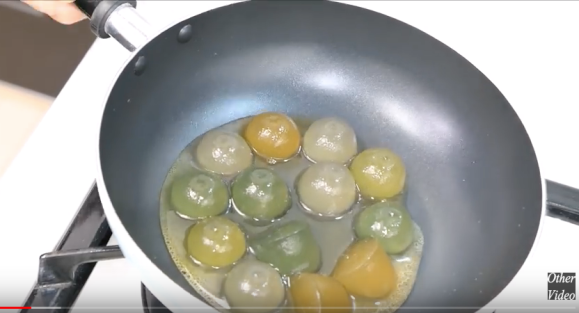
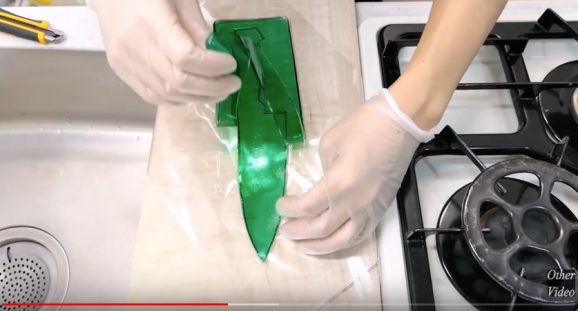
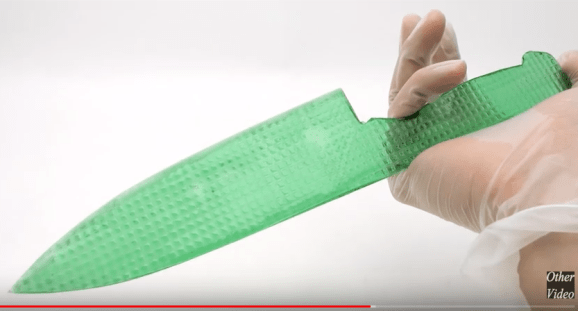
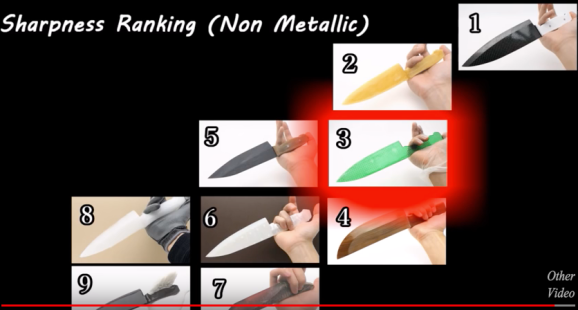
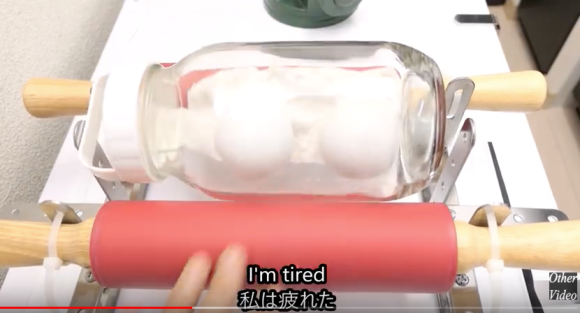

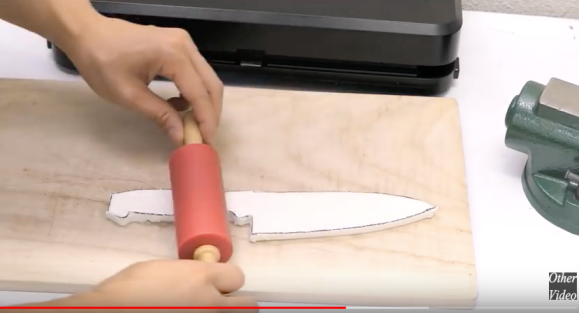
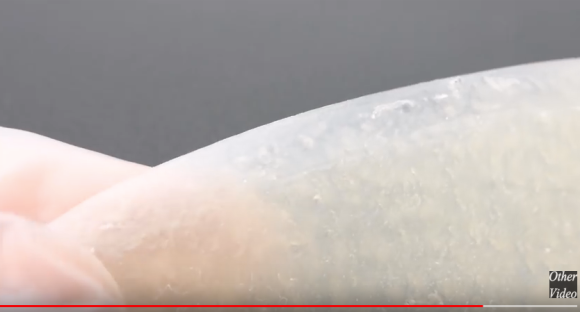
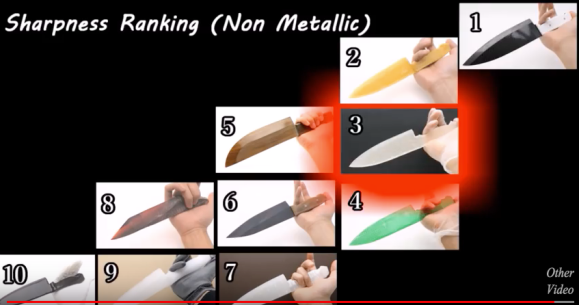
 Gun-dam, these are some crazy-looking anime robot-style cooking knives from Japan【Photos】
Gun-dam, these are some crazy-looking anime robot-style cooking knives from Japan【Photos】 Swords of famous samurai reborn as beautiful kitchen knives from Japan’s number-one katana town
Swords of famous samurai reborn as beautiful kitchen knives from Japan’s number-one katana town Japanese knife pro makes world’s allegedly thinnest sandwich【Video】
Japanese knife pro makes world’s allegedly thinnest sandwich【Video】 Japanese Nickel Damascus knives look exquisite and a little like they’re slipping out of reality
Japanese Nickel Damascus knives look exquisite and a little like they’re slipping out of reality What happens when you mix together all the jelly drinks from the convenience store? 【SoraKitchen】
What happens when you mix together all the jelly drinks from the convenience store? 【SoraKitchen】 Foreigner’s request for help in Tokyo makes us sad for the state of society
Foreigner’s request for help in Tokyo makes us sad for the state of society Japanese city loses residents’ personal data, which was on paper being transported on a windy day
Japanese city loses residents’ personal data, which was on paper being transported on a windy day Ghibli Park now selling “Grilled Frogs” from food cart in Valley of Witches
Ghibli Park now selling “Grilled Frogs” from food cart in Valley of Witches Harajuku Station’s beautiful old wooden building is set to return, with a new complex around it
Harajuku Station’s beautiful old wooden building is set to return, with a new complex around it Akihabara pop-up shop sells goods made by Japanese prison inmates
Akihabara pop-up shop sells goods made by Japanese prison inmates Red light district sushi restaurant in Tokyo shows us just how wrong we were about it
Red light district sushi restaurant in Tokyo shows us just how wrong we were about it Sandwiches fit for a sumo served up in Osaka【Taste Test】
Sandwiches fit for a sumo served up in Osaka【Taste Test】 Japanese ramen restaurants under pressure from new yen banknotes
Japanese ramen restaurants under pressure from new yen banknotes Historical figures get manga makeovers from artists of Spy x Family, My Hero Academia and more
Historical figures get manga makeovers from artists of Spy x Family, My Hero Academia and more Starbucks Japan releases new mugs and gifts for Mother’s Day
Starbucks Japan releases new mugs and gifts for Mother’s Day McDonald’s new Happy Meals offer up cute and practical Sanrio lifestyle goods
McDonald’s new Happy Meals offer up cute and practical Sanrio lifestyle goods All-you-can-drink Starbucks and amazing views part of Tokyo’s new 170 meter-high sky lounge
All-you-can-drink Starbucks and amazing views part of Tokyo’s new 170 meter-high sky lounge French Fries Bread in Tokyo’s Shibuya becomes a hit on social media
French Fries Bread in Tokyo’s Shibuya becomes a hit on social media Studio Ghibli releases new action figures featuring Nausicaä of the Valley of the Wind characters
Studio Ghibli releases new action figures featuring Nausicaä of the Valley of the Wind characters New private rooms on Tokaido Shinkansen change the way we travel from Tokyo to Kyoto
New private rooms on Tokaido Shinkansen change the way we travel from Tokyo to Kyoto Studio Ghibli glasses cases let anime characters keep an eye on your spectacles
Studio Ghibli glasses cases let anime characters keep an eye on your spectacles Tokyo Tsukiji fish market site to be redeveloped with 50,000-seat stadium, hotel, shopping center
Tokyo Tsukiji fish market site to be redeveloped with 50,000-seat stadium, hotel, shopping center Beautiful Ghibli sealing wax kits let you create accessories and elegant letter decorations【Pics】
Beautiful Ghibli sealing wax kits let you create accessories and elegant letter decorations【Pics】 Studio Ghibli releases Kiki’s Delivery Service chocolate cake pouches in Japan
Studio Ghibli releases Kiki’s Delivery Service chocolate cake pouches in Japan New definition of “Japanese whiskey” goes into effect to prevent fakes from fooling overseas buyers
New definition of “Japanese whiskey” goes into effect to prevent fakes from fooling overseas buyers Our Japanese reporter visits Costco in the U.S., finds super American and very Japanese things
Our Japanese reporter visits Costco in the U.S., finds super American and very Japanese things Studio Ghibli unveils Mother’s Day gift set that captures the love in My Neighbour Totoro
Studio Ghibli unveils Mother’s Day gift set that captures the love in My Neighbour Totoro New Japanese KitKat flavour stars Sanrio characters, including Hello Kitty
New Japanese KitKat flavour stars Sanrio characters, including Hello Kitty More foreign tourists than ever before in history visited Japan last month
More foreign tourists than ever before in history visited Japan last month New Pokémon cakes let you eat your way through Pikachu and all the Eevee evolutions
New Pokémon cakes let you eat your way through Pikachu and all the Eevee evolutions Sales of Japan’s most convenient train ticket/shopping payment cards suspended indefinitely
Sales of Japan’s most convenient train ticket/shopping payment cards suspended indefinitely Sold-out Studio Ghibli desktop humidifiers are back so Totoro can help you through the dry season
Sold-out Studio Ghibli desktop humidifiers are back so Totoro can help you through the dry season Japanese government to make first change to romanization spelling rules since the 1950s
Japanese government to make first change to romanization spelling rules since the 1950s Ghibli founders Toshio Suzuki and Hayao Miyazaki contribute to Japanese whisky Totoro label design
Ghibli founders Toshio Suzuki and Hayao Miyazaki contribute to Japanese whisky Totoro label design Doraemon found buried at sea as scene from 1993 anime becomes real life【Photos】
Doraemon found buried at sea as scene from 1993 anime becomes real life【Photos】 Tokyo’s most famous Starbucks is closed
Tokyo’s most famous Starbucks is closed One Piece characters’ nationalities revealed, but fans have mixed opinions
One Piece characters’ nationalities revealed, but fans have mixed opinions We asked a Uniqlo employee what four things we should buy and their suggestions didn’t disappoint
We asked a Uniqlo employee what four things we should buy and their suggestions didn’t disappoint Princesses, fruits, and blacksmiths: Study reveals the 30 most unusual family names in Japan
Princesses, fruits, and blacksmiths: Study reveals the 30 most unusual family names in Japan Tokyo police arrest teen for having knife 2mm too long, released because type of knife mistaken
Tokyo police arrest teen for having knife 2mm too long, released because type of knife mistaken We make a huge 12-litre chunk of jelly in a giant Starbucks mug to celebrate “Jelly Day” in Japan
We make a huge 12-litre chunk of jelly in a giant Starbucks mug to celebrate “Jelly Day” in Japan We try to improve the taste of Tabasco jelly beans by putting them on pizza
We try to improve the taste of Tabasco jelly beans by putting them on pizza Store employee uses barcode scanner to defeat knife-wielding robber
Store employee uses barcode scanner to defeat knife-wielding robber How drunk can Awamori Jelly infused with liquor from Okinawa make us?
How drunk can Awamori Jelly infused with liquor from Okinawa make us? Sushi chef drops knives on the train, causes panic and delays
Sushi chef drops knives on the train, causes panic and delays Japanese balloon jellies, or “Tengu’s Treasure”, are a very unique souvenir
Japanese balloon jellies, or “Tengu’s Treasure”, are a very unique souvenir The Zenyaren restaurant in Otemachi offers water jelly for the summer … with chicken inside it!
The Zenyaren restaurant in Otemachi offers water jelly for the summer … with chicken inside it! Japanese police take down knife-wielding man at train station without using lethal force【Video】
Japanese police take down knife-wielding man at train station without using lethal force【Video】 Melt your lover’s heart with these limited edition Valentine’s Day Krispy Kreme donuts
Melt your lover’s heart with these limited edition Valentine’s Day Krispy Kreme donuts Taste-testing every single sakura sweet and cherry blossom drink we could find at Mujirushi
Taste-testing every single sakura sweet and cherry blossom drink we could find at Mujirushi Red bean paste and cream cheese — a divinely sweet combination?
Red bean paste and cream cheese — a divinely sweet combination? Make Father’s Day sweet this year with these lovable treats from Ginza Cozy Corner!
Make Father’s Day sweet this year with these lovable treats from Ginza Cozy Corner! Japanese knife professional transforms vegetables into works of art【Videos】
Japanese knife professional transforms vegetables into works of art【Videos】 Mt. Fuji jelly makes Japan’s most famous mountain a delight to look at and taste!
Mt. Fuji jelly makes Japan’s most famous mountain a delight to look at and taste!
Leave a Reply